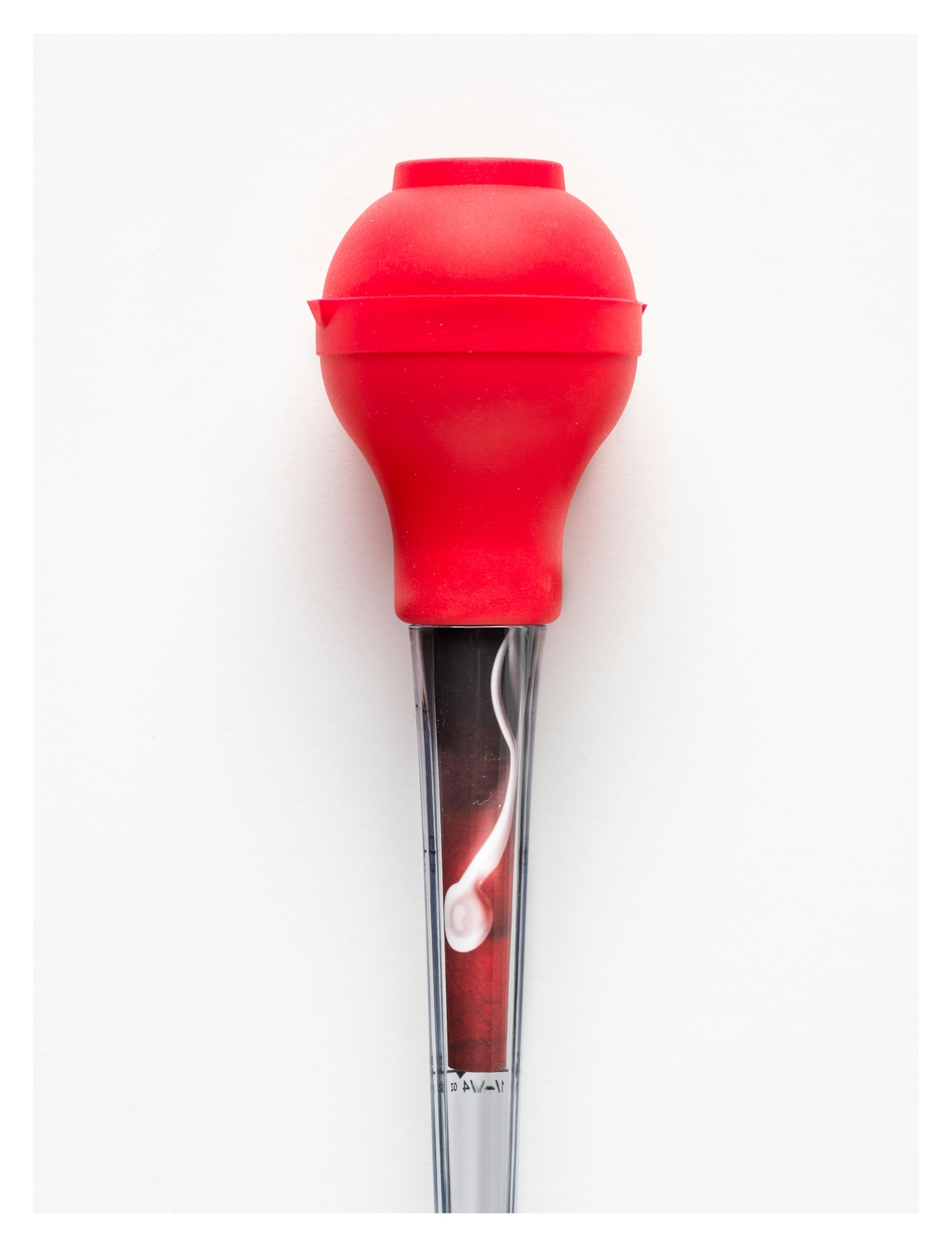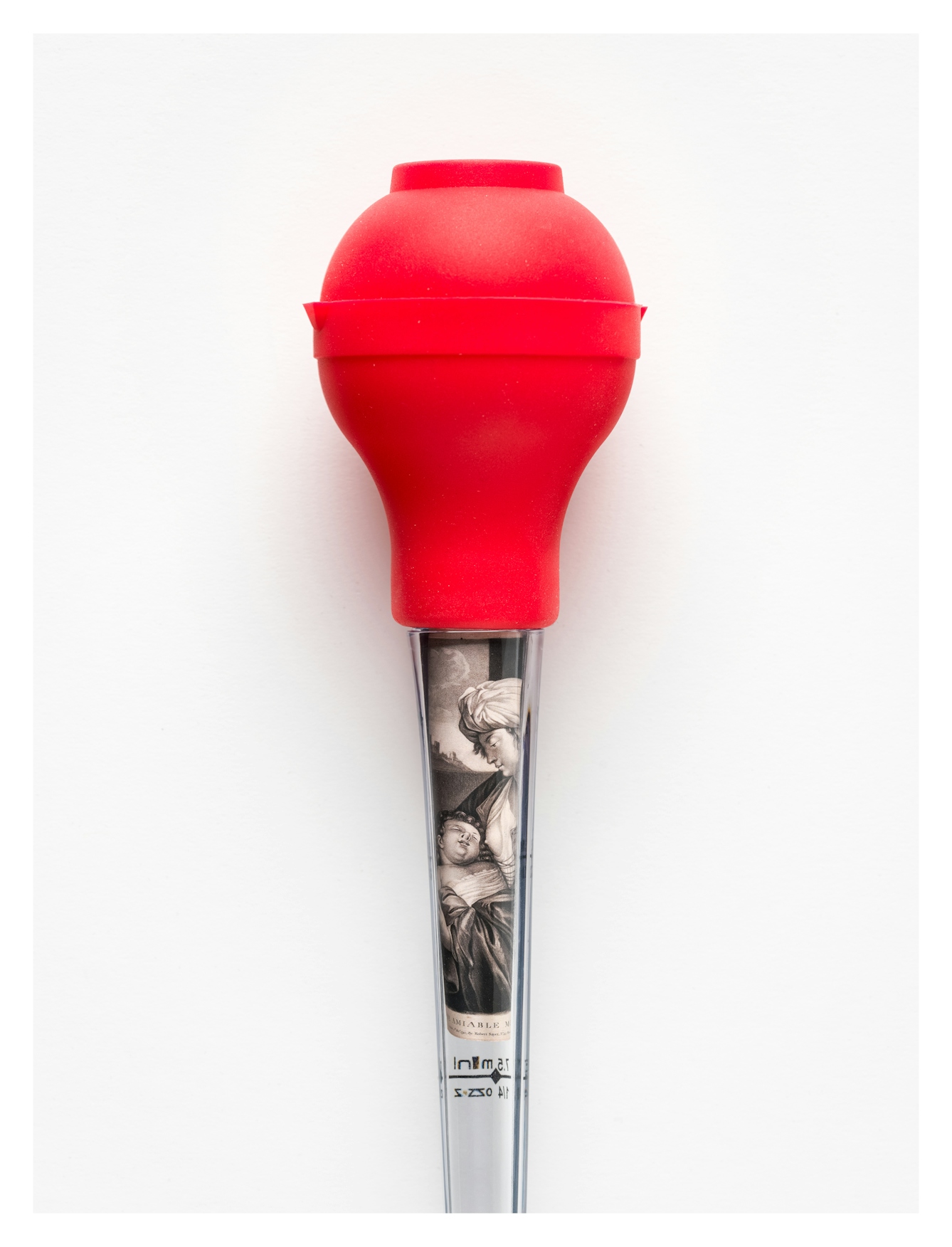If you celebrate Thanksgiving or Christmas with a roast turkey dinner, you may be familiar with the baster – a supersize kitchen utensil used to moisten meat while it’s cooking. But the baster has long had another association: as a tool for self-insemination. Where did the idea come from and have babies ever actually been conceived this way? Christine Ro digs into how the turkey-baster insemination myth took hold, and whether it has any grounding in reality.
It was during the first phase of the Covid-19 pandemic. I was restless. And through a series of rabbit-hole discoveries, I became slightly obsessed with turkey basters: kitchen utensils that resemble oversized syringes but are specifically for keeping meat moist during roasting.
Let me explain.
It started with a stranger reaching out via Facebook, to tell me that he thought we might have the same father. This discovery of a half-brother made me reflect on my general apathy about genetic origins. As the daughter of a Korean, the stepdaughter of a Native American, the stepsister of a Filipina, and the adoptive aunt of a Mexican, I’ve never put too much stock into connections based on heredity.
But for my half-brother, as for so many people around the world, this chromosomal link meant something. I wanted to better understand what I was missing, and this curiosity took me in some unexpected directions.
One of the webinars I attended during that early, shut-in, Zoom-heavy portion of the pandemic was called ‘Curious connections: the social life of egg and sperm donation’. It was part of a sociology research project at the University of Manchester.
As part of this session, Kathryn Almack, a sociologist at the University of Hertfordshire, wondered about the origins of the “turkey-baster myth”. According to this social lore, turkey basters aren’t just useful for cooking, but also for transferring sperm from a man into a woman, without any sexual contact being necessary.
“I wonder where that turkey-baster myth originates; from my research, more commonly, women using known donor sperm use a small syringe,” Almack mused. The couples she interviewed in her research “said they used syringes and laughed at the idea of turkey basters, given the small amount of sperm per donation!”
And with that, I set out to find out more about the turkey-baster myth. It’s been a nicely low-stakes, idle-curiosity background project for the last couple of years: visiting archives, reading publications by pioneers of self-insemination, and learning more about women’s experiences of managing their own fertility.
Well, we all have our hobbies.

“The couples interviewed ‘said they used syringes and laughed at the idea of turkey basters, given the small amount of sperm per donation!’”
It’s become clear that a major reason the myth persists is that the “turkey-baster insemination plot” is a pop-culture trope, sometimes comic but other times violent and disturbing. In the soap ‘Jane the Virgin’ the baster is big and silly; in the horror film ‘Don’t Breathe’ it’s terrifying. In both cases the baster has a dramatic visual presence.
At the same time, one specific type of visual culture – pornography – has led to some widespread misconceptions of just how much semen is produced per ejaculation. Let’s just say that an eye dropper or teaspoon is generally big enough.
Evading the establishment
Women have often had to be resourceful and innovative when it comes to getting pregnant. And, though their use has been exaggerated, women have certainly tried using turkey basters as vehicles for sperm. “I do believe at-home inseminations happened using turkey basters or the like,” explains Lisa Jean Moore, a medical sociologist at the State University of New York. “People also have been known to put semen on diaphragms and then insert them.”
Moore herself has personal experience of self-insemination, using a syringe. “I think that, depending on where a person lives and their healthcare access, syringes for medical use can be hard to come by and people make do with at-hand technologies.”
While artificial insemination goes back centuries, the “turkey-baster era” of self-insemination dates to around the 1970s. There was plenty of personal experimentation involved, for instance within the Feminist Self-Insemination Group in London.
Though their use has been exaggerated, women have certainly tried using turkey basters as vehicles for sperm.
Feminist and lesbian groups were especially influential in spreading the message that conception didn’t have to be overly medicalised, costly or inaccessible. This was important to groups of women, including single and queer women, who were judged especially harshly by a moralistic medical establishment.

“A symbol of domesticity became a tool for taking control of one’s own reproduction, a welcome contrast to the stories of doctors inseminating women without their knowledge.”
Some editions of ‘Our Bodies, Ourselves’, a seminal book on women’s sexual health that started publication in the 1970s, helped to spread the idea that turkey basters could be a tool for reproductive agency. A symbol of domesticity became a tool for taking control of one’s own reproduction, a welcome contrast to the stories of doctors inseminating women without their knowledge or equating artificial insemination to adultery or worse. Using ordinary household implements also allowed self-inseminators to evade the scrutiny of would-be meddlers.
As one woman marvelled in the 1979 book ‘Up Against the Clock: Career Women Speak on the Choice to Have Children’: “I heard about a group of lesbian women on the West Coast who were inseminating themselves using a turkey baster. That’s right, the kind you keep in your kitchen. I know it sounds a little strange, but I thought it was a wonderful idea... So I used a turkey baster and there was nothing to it...”
At-home insemination has become much more normalised and precise since then, with a dizzying array of products and resources available for the self-inseminator. Turkey basters, meanwhile, have generally returned to their single purpose in the kitchen.
Yet “turkey baster” remains a kind of shorthand. It’s sometimes used to describe all forms of self-insemination, even hundreds of years before the turkey baster was even invented, and including the use of a syringe or cervical cap rather than a baster.
Regardless of how common it ever was, the turkey-baster myth remains a useful reference point. It’s also a reminder that family units come in all sorts of configurations. That’s helpful for people like me, who have unresolved feelings about the genetic bonds we share with people we didn’t grow up with.
Despite there being no direct connection, my research into turkey basters has strangely become a way to channel some of my questions about family. My half-brother and I now exchange halting messages a few times a year in an effort to keep some sort of tenuous connection flickering. It’s not much, but it’s a start.
About the contributors
Steven Pocock
Steven is a photographer at Wellcome. His photography takes inspiration from the museum’s rich and varied collections. He enjoys collaborating on creative projects and taking them to imaginative places.


